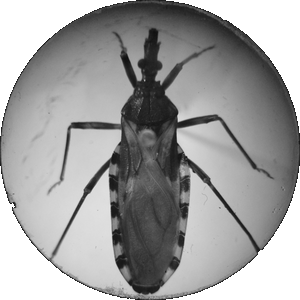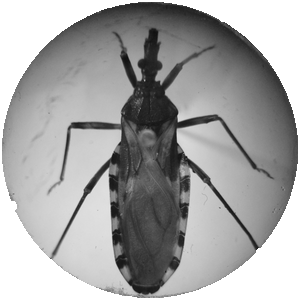Another approach to get a mask that is better aligned with the region-of-interest, and works even if the disk-of-interest is not exactly in the center of the image is to do a region growing segmentation from the four corners of the image.
corners = {{0, 0}, {0, 300}, {300, 0}, {300, 300}};
mask = RegionBinarize[bug, corners, .15]
ImageApply[1 &, bug, Masking -> mask]

Notice that in comparison, all the bug is still present in the masked image. You may apply a small dilation to the mask to get less of the black background:

Hope this helps,
-- Shadi